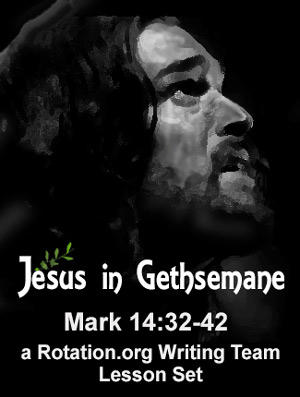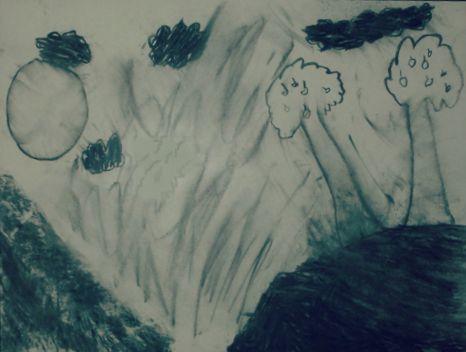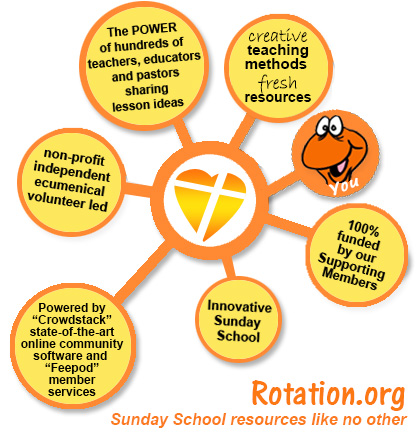Art Lessons, Ideas, Activities, and Resources for Teaching the story of Jesus in The Garden of Gethsemane.
Post your Sunday School ART lessons, ideas, activities, and resources for Jesus in The Garden of Gethsemane.
- Please include a scripture reference, supply lists, sources, suggested age range. age modification, etc.
- Photos are much appreciated! Click "attachments" and upload to your post.
 Be sure to check out the Writing Team's complete lesson set too!
Be sure to check out the Writing Team's complete lesson set too!
Jesus In The Garden Of Gethsemane
Art Workshop

Summary of Lesson Activities:
Create charcoal drawings visualizing events on the night Jesus was betrayed in the garden of Gethsemane. (Scroll down to see more charcoal drawings in the next post.)
Scripture Reference:
Luke 22:39-51
Key Verse: “Father,” he prayed. “All things are possible for you. Take this cup of suffering away from me. Yet not what I want, but what you want.” (Mark 14:36 TEV, adapted)
Lesson Objectives:
- Retell the story of Jesus’ last night in the Garden of Gethsemane.
- Locate the story in their Bibles, defining the Gospels as the first four books of the New Testament (older students); Younger students will learn that the story is in the New Testament.
- Understand that Jesus struggled with knowing what was to come (his death). He used prayer to strengthen himself to accept and follow God’s plan.
- Recognize that we too can use prayer to share our concerns with God, but must be willing to accept what God has planned for us.
- Know that it was God’s plan for Jesus to die – to show us how much God loves us, Jesus died so that our sins would be forgiven & we’d be welcomed as a part of God’s family.
Leader Preparation:
- Read the scripture for this lesson.
- Read and reflect on the overview material provided for this lesson.
- Gather the materials.
Materials List:
- Bibles; story Bible for younger students
- Key verse poster
- Charcoal drawing supplies – paper, charcoal pencils, fixative spray, erasers
- Smocks
- Wet wipes
- Samples of charcoal drawings
- Map of Jerusalem with Mount of Olives
Lesson Plan
Opening:
Greet your students warmly, welcoming them to the Art Workshop. Introduce yourself and any other adults.
Say: Let’s begin with prayer. Ask for any prayer requests. Ask if anyone would like to lead the group in prayer. Be prepared to say a prayer yourself, working in prayer requests. A suggestion: “Dear God, Thank you for our time together during this season of Lent in preparation for Easter. Please open our hearts today, so that we may more fully understand why you sent your only son to die for us. Help us understand how Jesus was able to do your will God, even when it meant he would suffer and die. Amen”
Dig:
Say: Today we will make drawings using an ancient art method.
Show samples.
Say: These drawings were created using charcoal. Charcoal drawing has been used as an art form since the discovery of fire. Think about primitive people sitting around a campfire. It’s getting late; the fire dies down and then goes out. The next day someone goes to where that fire was.
Ask: What do they find? (charred sticks) Have you ever taken a charred stick out of a cold campfire and used that stick to draw on a rock?
Say: That’s exactly how charcoal drawings are made! 30,000 years ago cavemen picked up burnt sticks and used them to draw the figures of animals they hunted on the insides of caves. Today, charcoal is still made basically the same way that cavemen’s charcoal was made – sticks are charred in hot ovens. Usually certain kinds of wood are preferred like willow. These charred sticks are made into charcoal drawing pencils. We are going to make charcoal drawings to depict our Bible story. First let’s review the story.
For 1st and 2nd graders:
Ask: If we want to read a story in the Bible about Jesus’ life, where would we find it – in the Old Testament or the New Testament of the Bible?
Say: We find this story about Jesus in the New Testament.
For 3rd grade and up:
Ask: Where in the Bible would we read about Jesus and his disciples?
What are the first four books of the New Testament?
What do we call those first four books?
Say: The word Gospel means “good news”. These first four books of the New Testament tell the story of the good news about Jesus.
Do: Distribute Bibles if needed.
Have them find the story in Luke, chapter 22, verses 39-53.
Do: Have the students read the heading (before verse 39) in their Bible.
[Will vary depending on which Bible they are looking at. If heading doesn’t include “Mount of Olives” then mention that Jesus was going to the Mount of Olives to pray.]
Have the students find the Mount of Olives on the map of Jerusalem. [Some of them may find maps in their Bibles.]
For all students:
Say: We are going to read about Jesus in the Garden of Gethsemane. The Garden of Gethsemane was located on lower slopes of the Mount of Olives, which overlooked the city of Jerusalem.
Do: Make sure everyone knows how to pronounce “Gethsemane”.
Say: I am going to read this story. While I read, create in your mind a picture of the scenes taking place. Think about how people were feeling – what was the mood.
Read Luke 22: 39-51 (or, for younger students, read from a story Bible).
Dig In to the Art Project:
Have the students choose a scene in the story and illustrate it with as much detail as possible. Have them put on art smocks to protect their clothing. Pass out supplies.
If they need help getting started:
- Some ideas for scenes: the place where Jesus was praying, or where the disciples were sleeping, the scene with Judas kissing Jesus, when the disciples ran away, or when Jesus is being taken away by the guards.
- What was the mood in that scene: peaceful or tense, scary or calm?
- When starting, make light pencil lines so it is easy to erase. Remember that erasing doesn’t mean you’ve made a mistake! Erasing is part of the process – you are erasing because you are paying attention to what you see.
- Demonstrate how to create different shading – light, medium and dark. Hold the pencil horizontally for a dark shade; close parallel lines create a medium shade.
Discussion While Working: (Choose according to age group)
- Gethsemane means oil press. Jesus is going to a place called Gethsemane. Sometimes people call it the Garden of Gethsemane. It wasn’t a garden like you might think of – with pretty flowers. It was more like an orchard. This was a place where olive trees grew. Olives were grown so they could be eaten, or pressed into olive oil.
- Why did Jesus go to the garden? (to pray, to talk to God)
- What did Jesus ask God to do? (take this cup from me) What did Jesus mean?
- How do you suppose Jesus was feeling while praying in the garden. (anguish about what was coming; prayed so hard, sweat was like drops of blood)
- How did Jesus finish his prayer to God? (not what I want but what you want)
- What happened when Jesus decided to obey God? (angel came to strengthen him)
- It can be hard to accept God’s plan for our lives because often we don’t know what that plan is. Why do you think even Jesus had to do hard things? (trials help us grow, make us strong; the story also shows us Jesus was just like us)
- What are some hard things you have faced?
- How can prayer strengthen and help you during those times?
Reflection:
Allow students to share their illustrations, explaining why they chose the scene they did.
Say: Just as Jesus prayed to God in the Garden of Gethsemane, we can talk to God whenever we are afraid or alone or are struggling. Prayer is not just talking to God but includes listening. In our listening we remember that God loves us. God was willing to let his own son die, so that our sins would be forgiven. God loves us that much! Jesus died so we could be welcomed as a part of God’s family forever.
Spray drawings with fixative according to directions on can. (Warning: Good ventilation is necessary!)
Resources:
- Lesson plan from a group of educators and Presbyterian pastors known as “St. Elmo’s Choir”. “Art Workshop:Lent/Easter (focus on Gethsemane/Judas & Peter).”
- Paint and Painting. New York: Scholastic Inc., 1994.
A lesson written by Carol Hulbert from: First United Methodist Church, Ann Arbor, MI
Photo Copyright 2004 Carol Hulbert.






